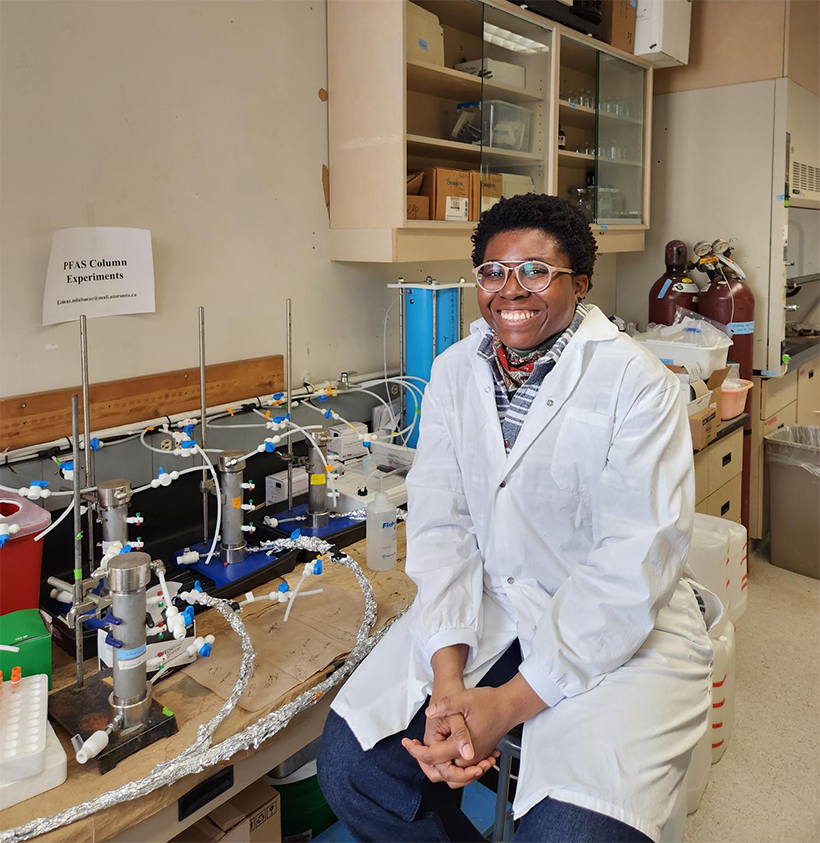
Ezinneifechukwunyelu Ndubueze is a PhD candidate currently working under the supervision of Professor Brent Sleep on a project looking into the removal of forever chemicals (poly and perfluoroalkyl substances – PFAS) from groundwater using colloidal activated carbon (CAC).
It is important to find a solution that will be able to remove the forever chemicals, as they may be found in drinking water, making it dangerous for consumption. CAC is an economical technology widely used for the in-situ (on-site) removal of PFAS from groundwater. Once injected into the groundwater CAC forms a filtering barrier which traps the forever chemicals. The project seeks to understand how CAC removes PFAS in groundwater when placed in the subsurface. In addition, it is looking into understanding how CAC behaves in the subsurface before and after the adsorption of PFAS.
1. What companies/organizations are you working with (if any)?
This project is in collaboration with the consulting firms Geosyntec and Porewater Solutions. The research is also conducted in collaboration with Professor Anh Pham’s Lab and Professor Neil Thomson from the University of Waterloo.
2. Who is leading this research and how many are involved?

The U of T part of inter-university research is led by Professor Brent Sleep. As a member of this project, my role mainly involves setting up and conducting laboratory experiments. During the past summer, I received assistance from a summer undergraduate student named Laura Xu. Additionally, PhD candidate Paul Furbacher also contributes to the project by helping with troubleshooting some of the laboratory experiments.
3. What impact do these projects have on the larger scale? (In what way will engineering address the problems to make the world a better place?)
Ultimately the project aims to develop methods to predict removal of PFAS after placing a CAC barrier in the subsurface. This will be useful in decision-making regarding the installation of CAC barriers for the containment of PFAS. As well as, the development of long-term monitoring plans at sites where CAC is used for filtering PFAS.
By Galina Nikitina